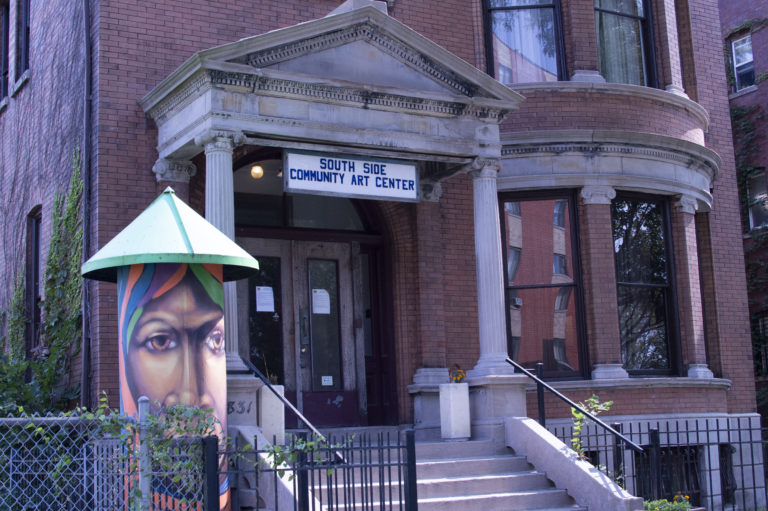The South Side Community Art Center is the nation’s oldest African American art center in the United States and is a Chicago Historic Landmark. While taking pride in our rich past, we today build on our legacy and innovatively serve as an artist- and community-centered resource with programs, exhibitions and events that inspire.
We welcome all to experience the history reverberating through our space, inspiring exciting forward momentum in artistic creation and expression.
Please view the sidebar for important information on safely visiting and engaging with the center during the coronavirus pandemic.
General Admission
We proudly keep South Side Community Art Center accessible to all by offering free admission. Those who are able are encouraged to donate to help support the center and its mission to conserve, preserve and promote the legacy and future of African American art and artists while educating the community on the value of art and culture.

Visitor Safety Guidelines
While the coronavirus pandemic continues to run its course, the safety and well-being of our guests and staff members remains of utmost importance to us.
The center is currently open to the public, with remaining caution to Covid 19.
Everyone who visits the Center must agree to follow SSCAC health practices when they visit.
We ask that you limit your visit to 30 minutes, whenever possible.
Health
Visitors who are not feeling well for any reason or (a) have any COVID-19 Symptoms (b) have had a positive COVID-19 test in the past 14 days, and/or (c) have had close contact with anyone confirmed or suspected of having COVID-19, are advised to stay home. In such cases, visitors are asked to postpone their visit for a future date.
Masks
Given our intimate space, we continue to recommend all visitors wear masks that cover both your nose and mouth.
Physical Distancing
Physical distancing is encouraged and we recommend guests maintain a distance of 6 feet or more from others during your visit.
Capacity
We ask that there be no more than 15 visitors per gallery. We appreciate your help in maintaining our gallery capacity limits.
Contact Tracing
For contact tracing purposes, each guest is encouraged to sign in upon entry.
Sanitation
For your convenience, a hand-sanitizing station and masks can be found near our first floor entrance, outside of the Burroughs Gallery.
Custodial staff are regularly sanitizing public areas.
What Can You Expect
Please do not touch the artwork or run in our galleries, and visitors must use pencils, not pens, if taking notes. We ask that you please do not drink or eat in our galleries.
No pets other than service animals are allowed in the galleries.
We are also hosting public engagements that allow us to maintain social distancing and hosting a number of virtual events. Please view our events page or sign up for our emails (below) to learn about upcoming events.
Support the mission
Donate today to keep the legacy of SSCAC alive and to ignite its future.
Map
Directions
South Side Community Art Center is located in Chicago’s historic Bronzeville neighborhood, off the East Pershing Road exit of I-90 and near the Indiana Green Line stop.
3831 South Michigan Avenue
Chicago, Illinois 60653
Hours
Wednesday – Saturday, 12pm -4pm.
Appointments necessary outside of open hours.


